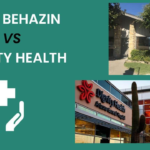The practice of reducing risks associated with drug use is known as harm reduction. It is predicated on the idea that people will continue to use drugs, regardless of whether or not doing so is against the law or poses a risk to their health, and that the most effective way to assist these people is to offer non-judgmental support and resources that aim to lessen the damage that is brought on by drug use. Harm reduction can involve a number of different approaches, such as the provision of clean needles and education on the prevention of overdoses, as well as medication-assisted treatment and safe injection sites.
The concept of harm reduction acknowledges that factors such as poverty, traumatic experiences, mental health issues, and social marginalization are frequently contributors to drug use. Harm reduction is an approach that seeks to improve overall health and well-being by focusing on resolving the underlying problems that contribute to the negative consequences of drug use. Programs that provide needles and syringes are examples of one type of harm reduction strategy.
It is possible to stop the spread of blood-borne diseases like HIV and hepatitis C by ensuring that people who inject drugs have access to sterile needles and syringes.
Substitution treatment for opioid addiction
It is possible to wean off of opioids like heroin with the help of medications like methadone and buprenorphine, which can also reduce the severity of withdrawal symptoms.
Overdose prevention
People who use opioids can have their lives saved by being given naloxone, a medication that can reverse the effects of an opioid overdose.
Secure locations for injections
People can use drugs safely and hygienically under the watchful eye of the trained medical staff at these establishments, thereby lowering their risk of overdosing and exposing themselves to other types of harm.
Drug checking
Overdosing and other health risks associated with unknown substances can be reduced through the use of testing that determines the purity and potency of drugs.
Instruction as well as guidance
People will be better able to make informed decisions about their drug use if they are provided with information and support regarding safe drug use practices and harm reduction.
Those who believe that complete abstinence is the only answer to the problem of addiction are likely to be critical of harm reduction. Nevertheless, harm reduction does not encourage the use of drugs, nor does it facilitate addiction. Instead, it acknowledges that people who use drugs frequently face multiple barriers to accessing health care and other resources and seeks to provide the support that is free of judgment in order to mitigate the negative effects of drug use and improve overall health.
One of the primary advantages of practicing harm reduction is that it can be modified to cater to the specific requirements of a variety of populations. For instance, strategies for reducing the risk of harm for young people who use drugs may center on education and counseling, while strategies for reducing the risk of harm for people who inject drugs may include needle and syringe programs and safe injection sites.
Some people believe that harm reduction does not address the underlying issues that lead to addiction and may even encourage people to continue using drugs. Nevertheless, harm reduction is not a replacement for treatment for addiction; however, many programs that focus on harm reduction also provide referrals to treatment facilities and other resources.








